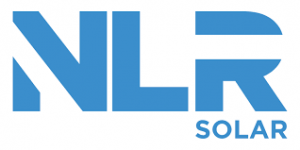NLR Solar Explains What Properties Ideal for Solar Farms
Large tract landowners taking advantage
UNITED STATES, May 2, 2023/EINPresswire.com/ -- For more information, contact:
Rachael Caswell
rcaswell@nationalland.com
There are over 2,500 solar farms in the U.S., ranging in size from a few dozen to hundreds of acres. Solar farms produce clean energy that helps communities lower utility costs and landowners generate stable income over decades. For landowners considering a solar farm lease, here’s what to know.
What is needed
Some governing authorities regulate how large solar farms can be, but generally, companies look for at least 30 acres up to a few hundred, which allows for transmission-scale projects. The land must be flat and ideally, have a compact regular shape, which allows for a more efficient design of the panel arrays. Annual snow and rainfall are not factors, but the land must not be in a designated flood zone or jurisdictional wetland. For 30-100 acre solar farms, the land must also have access to power lines and be a reasonable distance from a substation, usually within three to five miles.
If the property is being farmed or has an agricultural tenant, there is plenty of time to give notice and make changes. It takes months, sometimes years to get a project approved and ready for actual development. The land can be used in the meantime until the project gets underway.
Profitability
Leasing to a solar farm tenant will almost certainly increase profitability; we find that landowners average up to six times what they were earning per acre from a cash crop. The risk for the landowner is reduced dramatically, as well; most leases are 25 – 40 years, and the revenue won’t be threatened by weather, changing market pricing, or subsidy policies.
Landowners have some legitimate concerns about the value of their property and the reaction they’ll get from their neighbors and visitors to the area. Mitigation issues are under the control of city or county boards. They’ll be able to create policies that ensure the land is managed using environmentally sound methods and that neighboring properties retain their value. They can require borders around the property to create natural visual barriers. Getting zoning and other legal permissions will be the work of the tenant company; all they ask is that the owner be publicly supportive of the project.
Clark Merritt, an NLR Solar territory manager based out of Greenville, South Carolina, says solar leasing is a win/win for almost any rural landowner. “It’s a great way to diversify land use and create value from land that’s currently vacant or not suitable for the crops to grow. Beyond the obvious financial benefit over several decades, landowners can be sure that the land remains viable for the future. The panels are generally secured to steel I-beams in the ground, the topsoil remains intact, and the project is designed for the land to be used again for agriculture, keeping the soil composition at the forefront.”
Solar projects benefit the community as well, especially when compared to other kinds of developments. They’re quiet, they don’t generate any traffic, and they add valuable tax revenue for public use, which is welcome in areas where tax revenue and population may be declining. Site construction and maintenance create local jobs. Solar is the fastest-growing energy source. Landowners can be proud to be part of the clean energy movement.
Rachael Caswell
NLR Solar
+1 904-906-4113
email us here
Visit us on social media:
Facebook
Twitter
LinkedIn
YouTube
NLR Solar introduction
Legal Disclaimer:
EIN Presswire provides this news content "as is" without warranty of any kind. We do not accept any responsibility or liability for the accuracy, content, images, videos, licenses, completeness, legality, or reliability of the information contained in this article. If you have any complaints or copyright issues related to this article, kindly contact the author above.


